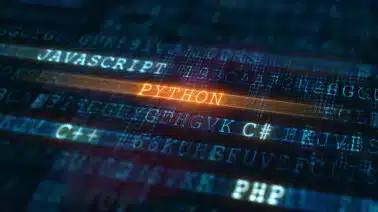Data engineering is the process of transforming raw data into things every enterprise wants and needs.
Data engineers work in a variety of industries building systems that collect, manage, and convert this highly valuable data. The overarching goal? Make data accessible. So non-data professionals can evaluate and optimize their company’s performance in infinite ways.
Successful data engineers have solid programming skills, statistics knowledge, analytical skills, and understanding of big-data technologies. And these skills come with a high price tag for employers. According to Indeed, the average base salary for a data engineer in the U.S. is $128,585.
As enterprises around the world become more data-driven, data engineering skills are a hot commodity. However, there is a shortage of professionals with the right knowledge to fill talent gaps. Interested in beginning or advancing a career in data engineering? Here are some of the most popular data engineering tools in the field:
1. Amazon Redshift
Built by Amazon, this fully managed cloud warehouse is based on an extensive communication channel between the client application and the data warehouse cluster. It’s an industry staple that powers thousands of businesses. Its algorithms allow users to perform operations on billions of rows. This reduces command execution time substantially.
2. Power BI
Microsoft Power BI is one of the leading tools for data engineering. Data engineers use it to process datasets and analyze insights so they can create dynamic visualizations. It’s a user-friendly tool—non-technical individuals can use it to build reports and dashboards seamlessly. Additionally, it’s extremely affordable. Power BI has a free, basic desktop version that you can use to create reports and dashboards on your PC.
3. BigQuery
Like Redshift, BigQuery is a fully-managed, serverless cloud data warehouse. It helps companies manage and analyze their data with built-in features like machine learning, geospatial analysis, and business intelligence. Additionally, it is speedy—BigQuery enables you to carry out analyses over an entire dataset in seconds.
4. Tableau
This data visualization and business intelligence tool can be used for common business applications, including: data modeling, creating live dashboards, and assembling data reports. Tableau uses a drag-and-drop interface to use data across different departments. The software allows even non-technical users to create visualizations within minutes. In just a few clicks, individuals can combine data sources, add filters, and more.
5. Snowflake
This warehouse-as-a-solution was designed to cater to current enterprise needs. It enables users to shift to a cloud-based system quickly. Its unique architecture combines the benefits of both shared-disk architecture and shared-nothing architecture. Snowflake is an ideal platform for data warehousing, data lakes, data engineering, data science, and developing data applications, because data workloads can scale independently from one another.
6. Python
Python is one of the most popular programming languages worldwide. It helps data engineers build efficient data pipelines because many data engineering tools use Python in the backend. It works with tools like Apache Spark, Apache Airflow, NiFi, Luigi, etc. Data engineers can use Python for tasks including: ingesting data from different file formats, data acquisition, data processing, and building ETL/ELT pipelines.
If these data engineering tools peak your interest, consider enrolling in Udacity’s Data Engineering with AWS Nanodegree program. Learn topics including: designing data models, building data warehouses and data lakes, automating data pipelines, and managing massive datasets. NOTE: It is recommended that learners have intermediate Python, intermediate SQL, and command line skills.


